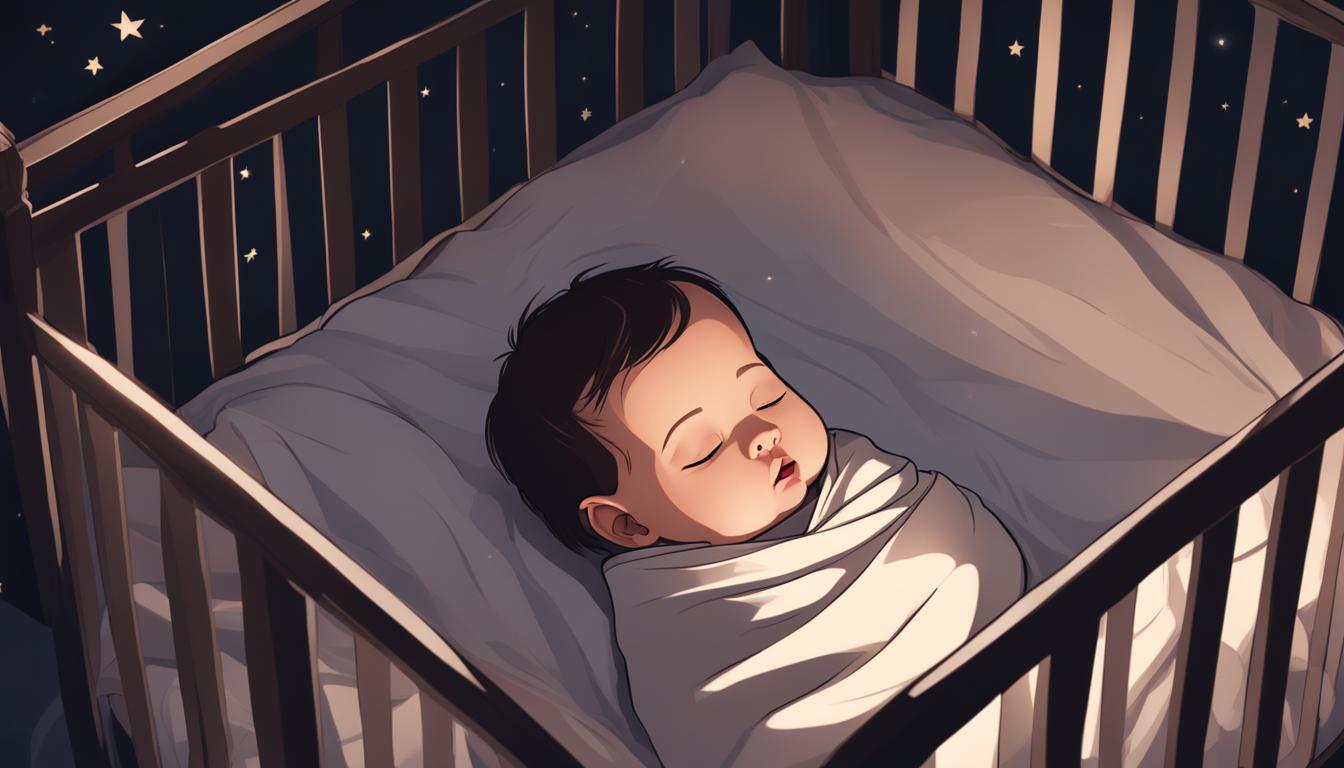Kids Bedroom Safety Checklist: Essential Steps for a Secure Sleep Space!
Kids Bedroom Safety Checklist: Discover the Must-Know Tips for a Safe Sleep Environment!
Kids Bedroom Safety Checklist: Discover the Must-Know Tips for a Safe Sleep Environment!Creating a safe and secure sleep environment for your child is crucial. When it comes to your child’s bedroom, it’s important to take the necessary precautions to ensure their safety. By following this comprehensive Kids Bedroom Safety Checklist, you can childproof their room and provide a secure sleeping space that promotes a peaceful slumber.
Key Takeaways:
- Childproofing your child’s bedroom is essential to create a secure sleep environment.
- Choose furniture and equipment that prioritize safety, such as a sturdy changing table and a crib that meets safety standards.
- Prevent suffocation and strangulation by avoiding powders, keeping the crib free of small objects, and dressing your child in safe sleepwear.
- Take precautions if you choose to co-sleep, such as using a safe sleeping surface and removing pillows and blankets from the bed.
- Prioritize your child’s safety and implement the necessary childproofing measures to create a secure and comfortable sleeping space for them.
Choosing the Right Furniture and Equipment

When setting up your child’s bedroom, it’s crucial to choose the right furniture and equipment that prioritize safety.
Opt for a sturdy changing table with a guardrail to prevent falls. This will ensure that your child remains safe and secure during diaper changes.
When selecting a crib, it’s important to look for a safe crib that meets the necessary standards. Make sure the crib has a guardrail to prevent your child from accidentally rolling out of bed. Additionally, ensure the mattress fits snugly within the crib to avoid any gaps that may pose a risk of entrapment.
Consider the mattress firmness when choosing a crib mattress. It should be firm enough to provide support for your baby, reducing the risk of suffocation. A safe mattress should also fit securely within the crib, without any gaps that could pose a safety hazard.
When it comes to the design of the crib, avoid cribs with decorative cut-outs, as these can be hazardous and increase the risk of entrapment. Additionally, ensure that the crib slat spacing meets safety standards to prevent your child from getting stuck between the slats.
Avoid using bumper pads in the crib, as they can increase the risk of suffocation or strangulation. Instead, opt for a fitted sheet that securely covers the mattress.
Dress your child in safe sleepwear when putting them to bed. Avoid using loose blankets or pillows, as these can pose suffocation hazards. Instead, consider using a wearable blanket or sleep sack to keep your child warm without the risk of covering their face.
By choosing the right furniture and equipment for your child’s bedroom, you can create a safe and secure sleep environment that promotes their well-being and ensures a restful night’s sleep.
Safety Checklist for Choosing Furniture and Equipment
| Item | Safety Considerations |
|---|---|
| Changing Table |
|
| Crib |
|
| Crib Mattress |
|
| Sleepwear |
|
Preventing Suffocation and Strangulation

Taking steps to prevent suffocation and strangulation in your child’s bedroom is essential for their safety. By following these important precautions, you can create a secure sleep environment and minimize potential risks.
- Avoid using baby or talcum powders in the bedroom. While these products may seem harmless, they can cause severe lung damage if inhaled.
- Keep the crib free of small objects, plastic bags, and wrappings. Babies are curious and may accidentally swallow or suffocate on these items if they are within reach.
- Ensure your baby sleeps on their back. This sleep position has been recommended by experts to reduce the risk of suffocation.
- Do not use soft comforters, pillows, necklaces, or clothing with drawstrings in the crib. These items can potentially pose a strangulation hazard to your baby.
To illustrate the importance of suffocation prevention, consider a study conducted by the American Academy of Pediatrics. The study found that the use of soft bedding, including blankets and pillows, is a significant risk factor for sudden infant death syndrome (SIDS). By eliminating these items from your child’s sleep environment, you can help ensure their safety and reduce the risk of suffocation.
Co-Sleeping Precautions
While co-sleeping with your child may be a personal choice, it’s important to take precautions to ensure their safety throughout the night.
Use a large mattress placed on the floor to provide ample space and a safe sleeping surface. This eliminates the risk of your baby falling off a raised bed. Additionally, it prevents the possibility of entrapment between the mattress and the bed frame.
Remove pillows and loose blankets from the bed to reduce the risk of suffocation. Instead, dress your baby in appropriate nightclothes and use a sleep sack for warmth. This way, your baby’s airway remains clear, promoting safe breathing during sleep.
If your bed is raised, use mesh guardrails to prevent your baby from rolling off. Mesh guardrails are designed to be breathable and reduce the risk of your baby becoming trapped or entangled.
Childproof the room and install a gate at the top of the staircase to prevent falls, especially if your child is mobile and may wander during the night. This extra layer of security ensures that your baby remains safe within the designated sleep area.
Pay attention to your sensitivity to your baby’s movements and consider alternative sleeping arrangements if you are a deep sleeper. Being aware of your baby’s presence and movements is crucial to prevent accidental suffocation or injury during co-sleeping.
Avoid co-sleeping if you have consumed alcohol or sedatives. These substances can impair your judgment and responsiveness, increasing the risk of accidental harm to your baby. It’s important to prioritize the safety of your child by ensuring you are fully alert and capable of taking care of them.
When getting ready for bed, dress in safe nightclothes without strings or jewelry that could potentially pose a strangulation risk for your baby. Opt for comfortable sleepwear that allows for unrestricted movement and doesn’t have any small parts that could be a choking hazard.
Lastly, keep pets out of the bed to ensure your baby’s safety. While pets can provide comfort and companionship, there is always a risk of accidental harm or injury when they are in close proximity to your baby during sleep.
By taking these co-sleeping precautions, you can create a safe and secure sleep environment for both you and your baby, allowing for a peaceful and restful night’s sleep.
Conclusion
Prioritizing your child’s safety when it comes to their bedroom is essential for their overall well-being. By following this comprehensive Kids Bedroom Safety Checklist, you can create a secure sleep environment that promotes a peaceful slumber for your child. From choosing the right furniture and equipment to preventing suffocation and co-sleeping safely, these essential steps will help ensure your child’s safety and provide you with peace of mind.
Implement the necessary childproofing measures, such as securing furniture to the wall, covering electrical outlets, and using safety gates, to create a secure and comfortable sleeping space for your child. Remove any potential hazards from their reach, such as small objects or cords, and ensure that the room is well-ventilated and at an appropriate temperature for sleep.
Regularly inspect the bedroom for any potential dangers and stay updated on the latest safety guidelines. By staying vigilant and proactive in creating a safe environment, you can protect your child from accidents and give them the best chance of a restful night’s sleep. Invest in their well-being by incorporating these safety measures in their bedroom and enjoy the peace of mind that comes with knowing your child is sleeping soundly in a secure space.
FAQ
What steps should I take to choose the right furniture and equipment for my child’s bedroom?
Opt for a sturdy and stable changing table with a guardrail to prevent falls. Choose a crib that meets safety standards, with appropriate slat spacing and no decorative cut-outs. Avoid using bumper pads and opt for safe sleepwear without loose blankets or pillows.
How can I prevent suffocation and strangulation in my child’s bedroom?
Avoid using baby or talcum powders, as they can cause lung damage if inhaled. Keep the crib free of small objects and plastic bags or wrappings. Always place your baby to sleep on their back and avoid using soft comforters, pillows, necklaces, or clothing with drawstrings.
What precautions should I take when co-sleeping with my child?
Use a large mattress placed on the floor, remove pillows and loose blankets, and consider using mesh guardrails if the bed is raised. Childproof the room and install a gate at the top of the staircase. Be sensitive to your baby’s movements and avoid co-sleeping if you have consumed alcohol or sedatives. Dress in safe nightclothes without strings or jewelry, and keep pets out of the bed.
Why is it important to prioritize my child’s safety in their bedroom?
Creating a secure sleep environment for your child is crucial for their overall well-being. Following a comprehensive Kids Bedroom Safety Checklist ensures that their sleeping space is free from potential hazards and promotes a peaceful slumber.




